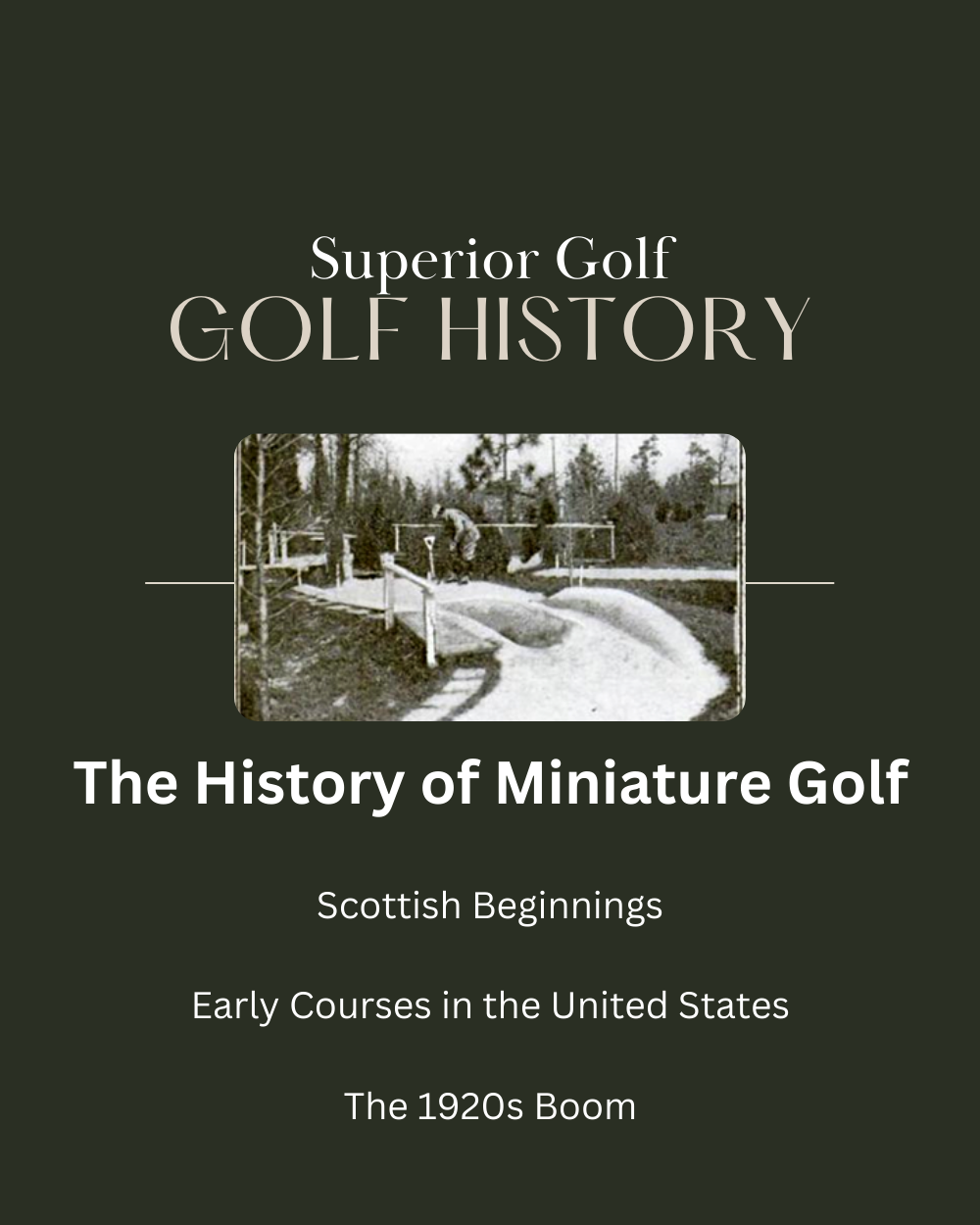The History of Miniature golf, also known as putt-putt, has a rich history that dates back over a century. It started in Scotland in the late 1800s1. Scots are said to have created this smaller version of golf.
Early versions were simple, set up in small areas like rooftops in the early 1920s in America1. These rooftop mini-golf courses quickly became popular. By 192’6, many American cities had them1.
Miniature golf is known by various names, including mini-golf and goofy golf. Places like Monster Mini Golf offer modern indoor mini-golf with arcade games. This shows how miniature golf has become a fun activity for families today.
Key Takeaways
- Miniature golf originated in the late 1800s in Scotland.
- By the early 1920s, rooftop mini golf courses were present across U.S. cities.
- The early American courses were simplistic and used limited spaces creatively.
- Mini golf goes by various names, reflecting its diverse appeal.
- Modern variations like Monster Mini Golf blend traditional courses with additional attractions for enhanced family entertainment.
Origins and Early Developments
Miniature golf started in Scotland, mixing old customs and new ideas. By the late 1800s, Scots showed the world mini golf. This showed their deep love for the game1. Soon after, it became a hit in the United States. Here, rooftop mini golf courses became trendy in the early 1920s1. By 1929, New York City was home to 150 rooftop courses. This showed how much people liked the game2.
The growth of mini golf saw many important changes. In 1916, James Wells Barber’s Thistle Dhu course brought in artificial greens. This course had both natural and man-made challenges3. Despite tough times in the 1930s, the U.S. had about 50,000 mini golf spots3. These key moments helped make mini golf a beloved activity worldwide.
Key Takeaways
- Mini golf started in Scotland in the late 1800s. It began a long-lasting tradition of this fun sport1.
- The early 1920s saw the rise of rooftop mini golf in the U.S. This was a big step forward1
- By 1929, New York City had 150 rooftop courses. This shows how popular mini golf was2.
- Courses like Thistle Dhu in 1916 introduced new challenges. This made the sport more fun and easy to get into3.
- Even during hard times, the Great Depression, there were about 50,000 mini golf places. This shows how much people liked the sport3.
Scottish Beginnings
Miniature golf started in Scotland in the late 1800s. The “Himalayas” course at St. Andrews Ladies’ Putting Club was one of the first. It was made in 1867 and had small putting greens. This is how modern miniature golf development began.
Early Courses in the United States
In the U.S., miniature golf got popular in the early 1900s. James Barber created a mini-golf game named “Thistle Dhu” in 1916. It was in Pinehurst, North Carolina. His course had fake greens and fun features. It was important for course design and made mini-golf popular in the States4.
The 1920s Boom
The 1920s saw a big jump in mini-golf’s popularity in the U.S. By 1930, the U.S. had about 25,000 mini-golf courses5. Garnet Carter’s 1927 “Tom Thumb golf” course was special. It had a fun, complex design. This time was vital for making mini-golf big in America. Courses started showing up everywhere, even on rooftops5.
Miniature Golf’s Evolution
Miniature golf has evolved beautifully, showing off creative and adaptable phases. The Great Depression could have ended it, but fans stayed strong. They made new courses with cheap, everyday items. This gave the courses a unique look and a fun twist.
The Great Depression Era
In the late 1920s, mini-golf became a big deal. Tom Thumb Golf helped make nearly 25% of US courses. Then the Great Depression forced many to close6. The ones that survived got creative, using leftover metal and bringing games indoors. They added cool features like loop-di-loops made of metal7. This change made the game even better and kept it going strong6.
Post-War Resurgence
After World War II, mini-golf came back as families looked for fun things to do. Courses started looking nicer with fancy designs and themes7. A group called NAPCOMS was formed, making mini-golf an official sport8. It was a great time for putt-putt games, bringing families together once again.
Technological Advancements
Today, mini-golf is cooler than ever thanks to new tech. Indoor places have amazing designs and fun themes. Courses use high-tech stuff to make obstacles move, keeping the game exciting6. Places like Rainbow Skateland mix old and new, making sure mini-golf is still a hit for everyone.
Want to know more about miniature golf? Check out this source. You can also listen to this podcast or read this detailed article.
Conclusion
Miniature golf has an amazing story. It started in Scotland and has become a favorite activity for families all over. At first, mini-golf was a simple game at St. Andrews Ladies’ Putting Club. Now, it has grown into a fun and creative entertainment for everyone. This change shows how mini-golf can keep its traditional charm while embracing new ideas and technologies.
Mini-golf is great because everyone can play it. You can find a course in many places, like seaside towns or big cities in the UK9. It’s perfect for spending time with family and friends. The game helps people connect, which is why it’s so popular with all age groups9. The website benefits of playing mini-golf with kids talks about how mini-golf can make family bonds stronger.
The courses today are creative and fun. Glominigolf in Riverside, for example, has holes that challenge players of all levels10. The new technology in mini-golf makes it even more exciting. Playing an 18-hole game takes about 30 minutes to an hour10, which is plenty of time for fun.
Looking ahead, mini-golf will keep getting better. It will mix its classic appeal with new advancements. The article Why do people like mini-golf explores why the game means so much to many. With these changes, mini-golf will keep being a cherished activity for a long time.
FAQ
What are the origins of miniature golf?
How did mini-golf gain popularity in the United States?
What influenced the diverse course designs in mini-golf?
How did the Great Depression affect miniature golf?
What role did post-war America play in the resurgence of mini-golf?
How have technological advancements transformed mini-golf?
What variations of mini-golf exist today?
Source Links
- https://monsterminigolf.com/blog/history/history-of-mini-golf/
- https://quizygolf.com/en/history-evolution-minigolf-past-present/
- https://www.nationalgeographic.com/culture/article/mini-golf-history
- https://lareservabsc.com/en/blog/what-is-the-story-behind-minigolf-and-its-popularity-nowadays/
- https://www.miniaturegolfsolutions.com/Discover-the-History-of-Mini-Golf-1-4.html
- https://www.tackimac.com/when-was-mini-golf-invented.html
- https://www.terrastories.com/bearings/miniature-golf
- https://www.iheart.com/podcast/105-stuff-you-should-know-26940277/episode/how-miniature-golf-works-69754093/
- https://www.puttinthepark.com/why-do-people-like-mini-golf/
- https://www.glominigolf.com/blog/benefits-of-playing-mini-golf-with-kids

